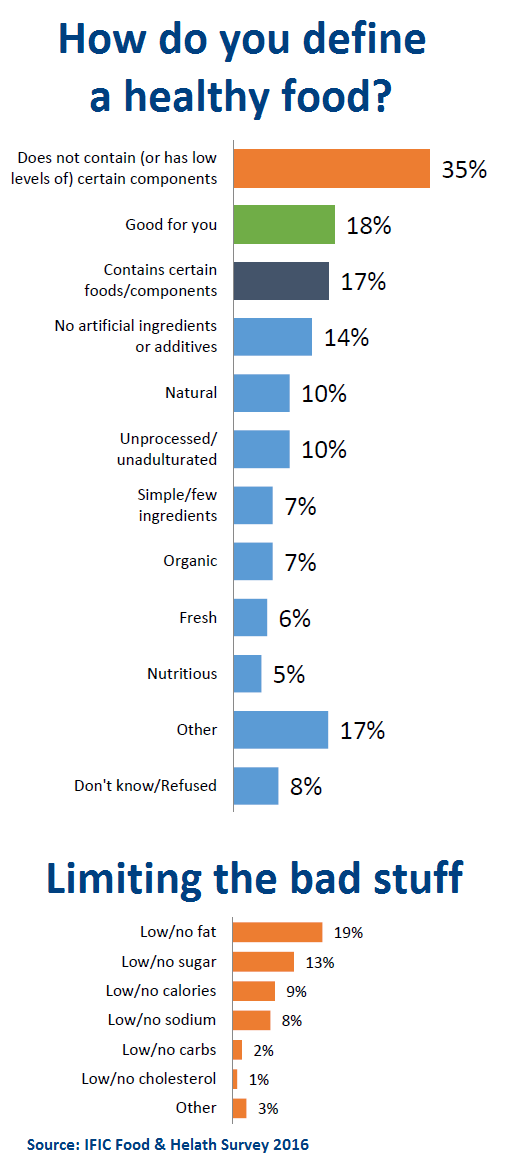
Consumers Use Junk Food to Define Healthy Food
 When consumers define healthy food, they look for the absence of junk. Is the food nutritious? That’s just about the last thing consumers think of, according to new research from the International Food Information Council (IFIC) Foundation.
When consumers define healthy food, they look for the absence of junk. Is the food nutritious? That’s just about the last thing consumers think of, according to new research from the International Food Information Council (IFIC) Foundation.
When asked, how do you define a healthy food, the top answer consumers give by far is that it “does not contain certain things.” What they’re avoiding is fat, sugar, calories, and salt. The vague idea that it’s “good for you” comes in a distant second on the list of what makes a food healthy. “Nutritious” is dead last.
Things get really interesting when you dig into how people form these ideas. On one hand, consumers say that registered dietitians and nutritionists, along with their personal healthcare providers, are their most trusted sources for information about what they should be eating.
But on the other hand, media headlines and reports come out on top when it comes to changing ideas about what’s healthy or unhealthy. Wrong answer. Nutrition headlines are completely unreliable. We can definitely find a better source to define healthy food.
Call us nostalgic, but we long for the day when people eat food because it’s good – not because it’s harmless or medicinal.
Click here for more perspective from IFIC, here for an executive summary of the research. Click here for a set of slides in a pdf and here if you’d like it in PowerPoint.
Join Us for Breakfast, Delivered by Junk. Image © Kylie Jaxxon / flickr
Subscribe by email to follow the accumulating evidence and observations that shape our view of health, obesity, and policy.
August 7, 2016
